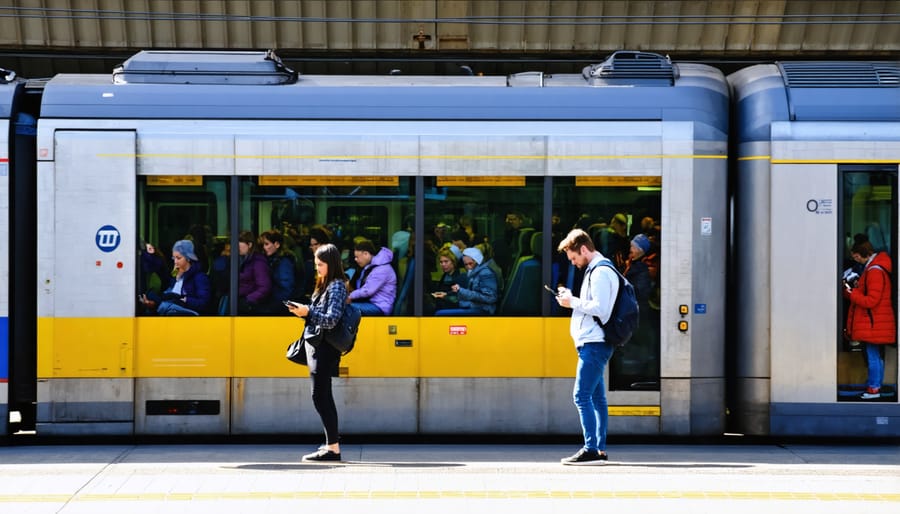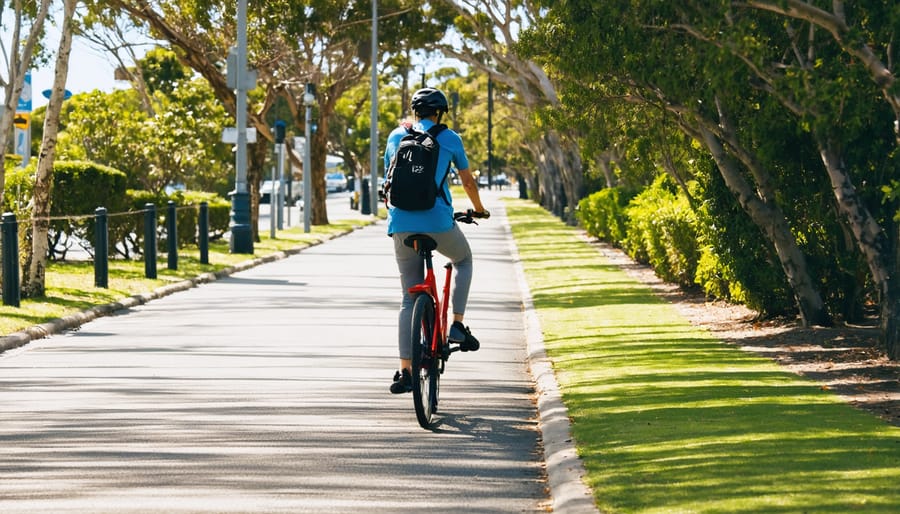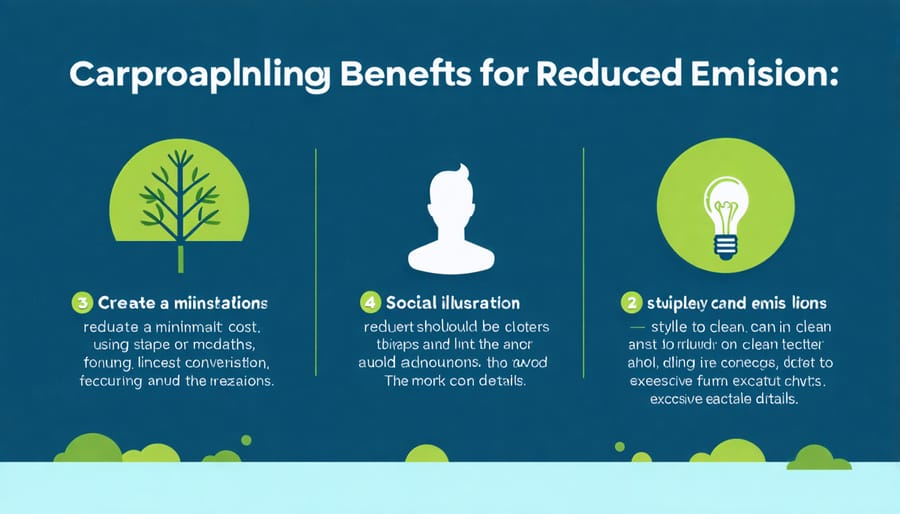Transform your daily routine into a powerful force for environmental change with simple yet impactful eco-friendly habits that benefit both your community and our unique Australian ecosystem. Every small action, from your morning coffee choice to your evening wind-down ritual, creates ripples of positive environmental impact across our sunburnt country.
Australia faces distinctive environmental challenges, from water scarcity to increasing carbon emissions, but we’re uniquely positioned to pioneer sustainable solutions. Our abundant sunshine, innovative spirit, and strong community values provide the perfect foundation for adopting eco-conscious practices that reflect our local context and needs.
Whether you’re a busy professional in Sydney’s CBD, a family in suburban Melbourne, or running a small business in regional Queensland, integrating sustainable habits into your daily life is both practical and rewarding. These changes not only help preserve our iconic landscapes and protect our diverse wildlife but also build more resilient, connected communities.
By embracing eco-friendly practices, you’re joining a growing movement of Australians who understand that environmental stewardship starts with individual choices. The journey toward sustainability isn’t about perfection – it’s about progress and the collective impact of our everyday decisions.
Public Transport: Your First Step to Green Commuting

Smart Cards and Route Planning
Modern technology has made public transport in Australia smarter and more convenient than ever before. Most capital cities now offer smart card systems like Opal in Sydney, myki in Melbourne, and go card in Brisbane, making your daily commute seamless and paper-free. These digital payment systems often provide discounted fares during off-peak hours, helping you save money while reducing peak-hour congestion.
Take advantage of transport planning apps like TripView and Moovit, which provide real-time updates on service delays, platform changes, and the most efficient routes. Many of these apps also show the carbon emissions saved by choosing public transport over driving, helping you track your environmental impact.
For maximum efficiency, consider setting up auto top-up on your transport card and enabling push notifications for service updates. Some apps even let you plan multi-modal journeys, combining trains, buses, and light rail to find the quickest route to your destination.
Pro tip: Keep an eye out for special promotions and rewards programs offered by transport authorities – many offer bonus points or discounts for regular use during off-peak times, making your eco-friendly choice even more rewarding.
Multi-Modal Transport Solutions
Embracing multi-modal transport is like creating your own eco-friendly travel playlist – mixing and matching different transport options to reduce your carbon footprint while maximising convenience. Here in Australia, combining public transport with cycling, walking, and carpooling isn’t just possible; it’s becoming increasingly popular in our major cities.
Start by mapping out your regular journeys and identifying where you can blend different transport methods. For instance, ride your bike to the train station, catch the train into the city, then walk or use a share bike for that last kilometre to work. Many Australian train stations now offer secure bike storage facilities, making this combination particularly practical.
Apps like TripView and Moovit help you plan multi-modal journeys effectively, showing real-time updates for buses, trains, and ferries. Some forward-thinking companies are even offering incentives for employees who adopt mixed transport solutions, such as end-of-trip facilities and travel allowances.
Consider joining local transport sharing initiatives – from neighbourhood carpooling groups to bike-share programs. These community-based solutions not only reduce individual vehicle usage but also help build connections with fellow eco-conscious commuters.
Remember, even small changes count. Try walking to your local shops instead of driving, or catch the bus to the train station on rainy days when cycling isn’t practical.
Pedal Power: Cycling Infrastructure in Australian Cities
E-Bikes and Battery-Assisted Options
For those looking to embrace cycling as sustainable transport but concerned about longer distances or challenging terrain, e-bikes offer the perfect solution. These battery-assisted cycles are revolutionising sustainable commuting across Australia’s urban landscapes, making eco-friendly travel accessible to more people than ever before.
Modern e-bikes can assist riders up to 25 kilometres per hour, effectively flattening hills and reducing the effort needed for longer journeys. With ranges typically between 40-80 kilometres per charge, they’re ideal for daily commutes in cities like Sydney, Melbourne, and Brisbane. Many models now feature removable batteries that can be charged at work or home, eliminating range anxiety.
The uptake of e-bikes in Australia has been impressive, with many local councils supporting the transition through dedicated bike lanes and secure parking facilities. Some workplaces are even offering incentives for employees who choose this greener commuting option. While the initial investment might be higher than a traditional bike, the ongoing costs are minimal, especially when compared to running a car, making them an economically sound choice for environmentally conscious commuters.

Bike-Friendly Workplace Solutions
Transform your workplace into a cycling hub by championing bike-friendly initiatives that benefit both staff and the environment. Start by discussing secure bike storage with your workplace management – many Australian businesses are eligible for government grants to install quality bike racks and shelters. Consider proposing end-of-trip facilities like showers and lockers, which are becoming increasingly common in progressive Australian workplaces.
Create a cycling community within your organisation by starting a bike buddy system, where experienced riders mentor newcomers on safe routes and cycling tips. Advocate for joining the National Ride to Work Day, which thousands of Australian workplaces already celebrate each October.
Look into your workplace’s health and wellness programs – many organisations offer incentives for sustainable transport choices. Some forward-thinking companies provide bicycle maintenance allowances or partner with local bike shops for staff discounts.
Remember to highlight the business benefits: improved staff health, reduced parking costs, and enhanced corporate social responsibility. Share success stories from other Australian workplaces that have embraced cycling culture, like major CBD offices that have seen significant increases in staff satisfaction and reduced carbon footprints through their bike-friendly initiatives.
Carpooling Communities
Carpooling has emerged as a brilliant way for Australians to reduce their carbon footprint while building stronger community connections. Whether you’re commuting to work in Sydney’s CBD or heading to Melbourne’s outer suburbs, you can start carpooling today with various user-friendly platforms designed specifically for our local needs.
Popular Australian carpooling apps like Carpool Club and CoSeats are making it easier than ever to connect with fellow commuters heading in the same direction. These platforms feature built-in safety measures, rating systems, and flexible scheduling options that cater to different work patterns and lifestyles.
Many Australian workplaces are now actively promoting carpooling initiatives, offering incentives like preferred parking spots and reduced parking fees for shared vehicles. For example, major business hubs in Perth and Brisbane have established dedicated carpooling networks, helping colleagues connect and share rides efficiently.
The benefits extend beyond environmental impact. Regular carpoolers report saving hundreds of dollars monthly on fuel and parking costs, while enjoying reduced stress and valuable social connections. Communities across regional Australia are also embracing carpooling, with local Facebook groups and community notice boards helping neighbours coordinate school runs and shopping trips.
To get started, consider joining your workplace’s carpooling scheme or connecting with verified carpooling groups in your area. Many local councils now provide resources and support for establishing carpooling communities, making it easier than ever to find reliable travel companions while doing your bit for the environment.

Making the Switch: Practical Tips for Your Green Commute
Making the switch to eco-friendly commuting doesn’t have to be overwhelming. Start by mapping out your regular routes and identifying alternatives that could work for your schedule. Many Australian cities now offer extensive cycling networks, and you might be surprised to discover convenient bike paths right in your neighbourhood.
Consider starting with a hybrid approach – perhaps cycling to work on clear days and using public transport when the weather’s less favourable. Many train stations and bus interchanges now offer secure bike storage, making this combination particularly practical. To reduce your transport emissions, try carpooling with colleagues who live nearby or joining local rideshare groups.
For shorter trips, walking is not only emission-free but also great for your wellbeing. Many Aussie suburbs are becoming more pedestrian-friendly, with improved footpaths and shade coverage. If distance is a challenge, consider an e-bike – they’re becoming increasingly popular in our cities and make light work of hills and headwinds.
Don’t forget to check if your workplace offers any green commuting incentives. Many Australian companies now provide end-of-trip facilities, like showers and lockers, or flexible start times to accommodate sustainable transport options. Start small, perhaps with one car-free day per week, and gradually build up as you become more comfortable with your new routine.
Every time we choose a more sustainable way to travel, we create ripples of positive change in our communities. From walking to work in Brisbane’s bustling CBD to carpooling with neighbours in suburban Melbourne, these individual choices add up to make a real difference for our environment. By embracing greener commuting habits, we’re not just reducing our carbon footprint – we’re helping create cleaner air, quieter streets, and more liveable cities across Australia. The shift towards eco-friendly transport might seem challenging at first, but remember that every sustainable journey starts with a single step. Whether it’s trying out your local bike path tomorrow or planning your first car-free week, your actions inspire others and contribute to a healthier planet. Let’s make our daily commutes part of the solution for a more sustainable Australia.
